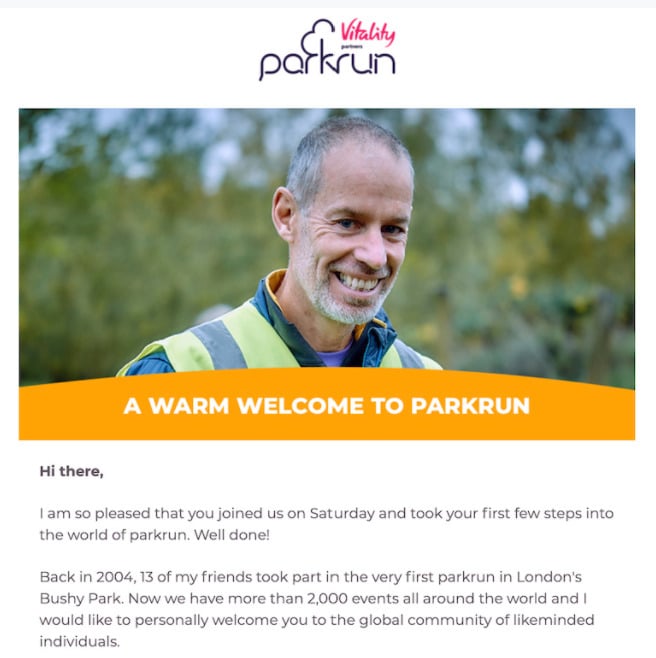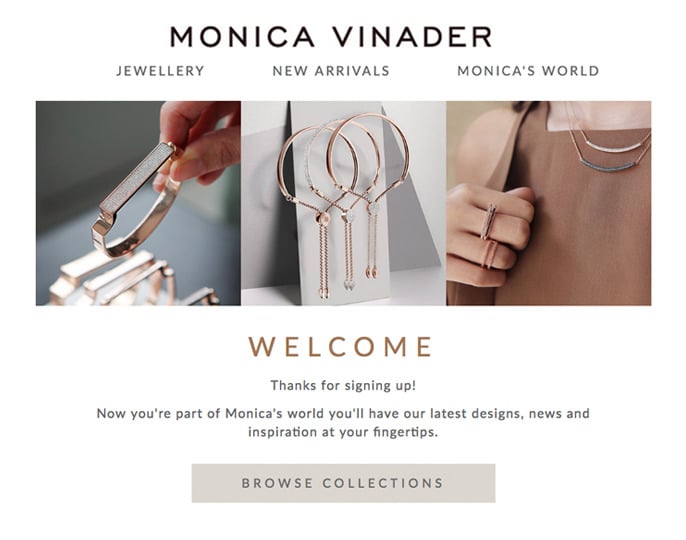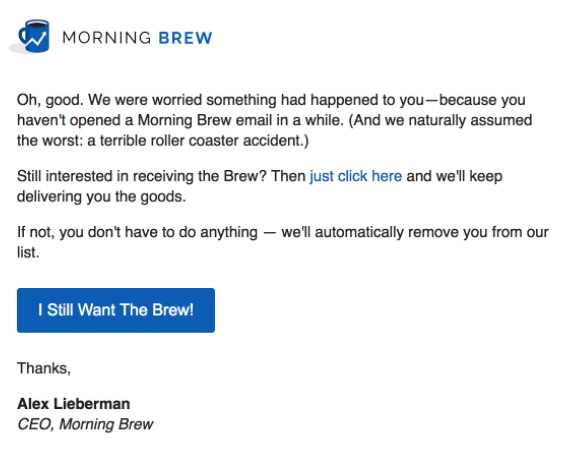You have a list. You have a boatload of engaged readers. You have the tools to send out great emails. But there’s still something missing that’s not generating the engagement you wanted.
59% of marketers say email marketing provides their best ROI. If that’s not the case for you, it may be time to zoom out and see what’s wrong.
How can you get back to the email marketing best practices that generate the kind of excitement you had when you first created your list? Here are a few ideas.
From now on, start split-testing everything you send out
You’re probably already familiar with split testing. It means sending out different variations of the same email to see which gets the better response.
For example, you might isolate the email subject. Same exact emails, different subject lines.
Which one gets a higher open rate? Which one generates more sales? That’s the style to use on your next campaign.
But here’s the thing. You can apply the same testing principles to anything in your campaign.
At Campaign Monitor, we’ve even been known to split test entire templates. In one case, we saw a click-through-rate increase of 127% from that change alone.
Split-testing is a great way to get back to basics. Consider:
- 39% of companies don’t split-test your emails. Start this habit and you’re immediately in the top 61%.
- Split-testing makes each email campaign a constant learning process. Even if you don’t get engagement from your current campaign, a split test might give you insights to carry to the next.
- You’ll learn about your subscribers’ preferences. Do they respond to a coupon code more often than a personalized subject line? Do they want contests? Valuable information? Do they open an email more often when it’s “from the CEO” or from your entire brand?
What’s more, A/B testing will introduce you to more email campaign best practices.
At Campaign Monitor, we’ve learned…
…personal subject lines get higher open rates.
…for nonprofits, demonstrating impact is critical in driving engagement. (See below).
…CTAs should differ depending on your industry and sales stage.
Chances are, there are some additional best practices unique to your industry. And you can only learn them if you start split testing.
To hook your audience, start telling them a story
Split testing is important. But if you lose touch with why people sign up to your newsletter in the first place, you can slowly drift away from your core message.
The solution: remember the story you want to tell.
Here’s an example from parkrun:
Notice it only takes a couple of paragraphs to figure out what they’re all about. They tell their “zero to hero” story in the span of a few sentences as soon as you sign up.
Email marketing software like ours is important. It will get your message out there. But remember it’s just the template.
You have to fill in that template with the human side of your story.
Don’t forget to include an element of intrigue or mystery in your story. Think of the great opening lines in the history of literature. They hook you right off the bat with a little bit of mystery.
Call me Ishmael. Why not “My name is Ishmael”? What’s Ishmael hiding, anyway? We have to read more to find out.
In your emails, the same principle is at work. The two most important sentences you’ll write are the subject line and the opening sentence.
Take the time to consider the best way to hook your readers. Want some tips to make this work? Consider the open loops technique.
In essence, the open loops technique means starting your email with an element of mystery. One study even says that we get feelings of anxiety when there’s a disparity between what we know and information we don’t know, but want to know.
What’s the little bit of intrigue and storytelling you can incorporate into your next subject line? Your first sentence? Keep trying until you’re certain it will intrigue your readers.
Write a “welcome” email with personality
We’re talking about best practices here, so let’s continue with one of the foundations: writing a good “welcome” email.
This refers to the email your readers receive upon confirming their subscription. There are two essential elements every “welcome” email should contain:
- A personal note. You can get super-casual here, or you can simply thank them for signing up. Either way, let them know there’s a human on the other end of the inbox.
- A description of what they’re about to receive. Remind them what they signed up for. Below, look how Monica Vinader’s newsletter reminds them why they signed up, then directs people to a CTA:
Think of your “welcome” email as free real estate. It’s an opportunity to engage, personalize, and direct to a CTA. Why not make full use of it?
You can also incorporate a re-engagement newsletter for people who haven’t responded in a while. Check out how Morning Brew keeps it casual:
It looks like a breezy, firsthand, personalized letter from the CEO. Who could say no to that?
Stay out of the “spam” folder and “promotions” tab
Email marketers have two natural predators: the spam folder and Gmail’s “promotions” tab.
Avoiding spam filters is one of the core best practices in the entire industry. Without it, you won’t get your meticulously crafted emails read.
Email providers like Yahoo and Gmail may categorize your emails as spam if they don’t meet quality guidelines. And yes, they can use formulas and “scores” to measure your success. Here’s what you’ll need to know:
- Aim for high open rates. When users frequently open your messages, it’s a healthy signal. It means that your emails are valuable and people are more likely to move them to the inbox when they see them in the spam folder.
- Be valuable enough so people call you “not junk.” One of the top numerical indicators of a high-quality email newsletter is how often your own readers rescue you from the junk box.
- Remind your readers to add you to their address book. This, too, will help the email providers award you a higher score.
Divide your list into segments
A segmented list can increase revenues by as much as 760%.
Think about the math for a second. Two nearly identical lists can generate different revenues, almost at a ratio of eight-to-one.
Why is that?
Personalization. If you split customers into segments based on shopping preferences, or which types of emails they prefer to receive, that alone can drive higher conversion rates.
Here are some ways to do it:
- Behavior-specific segmentation. Do some customers buy small-ticket items, while others prefer the larger ones? Do some spend lots of time on your website, and others less? You might start crafting different emails and promoting different products on their established behavior.
- Content-specific segmentation. If you have data on your specific contacts, you may be able to create new segments based on the content they prefer. For example, if one reader prefers to download eBooks and guides and another prefers to make product purchases, you have enough information to create entirely different campaigns.
Some email marketers even ask their customers directly: which do you prefer?
They then ask their customers to visit their link preferences. This gives the email marketer the knowledge to split customers into different groups based on their individual “votes.”
Optimize your email marketing frequency
No one likes to hear from you too much.
And others won’t want to hear from you too little.
It’s the classic Goldilocks quandary in email marketing: how often should you send out your email blasts?
26% of people respond that they unsubscribe from email lists because they get too many emails in general. 19% say they do it because a company specifically sends them too many.
On the other hand, you don’t want to send out so few that you never make any sales.
Split testing is one way to cure this common problem. But you might also consider adding a footer to your emails that let users gauge their own frequency preferences.
Wrap up
Email campaign best practices can work so well that it’s easy to get away from them. You figure you’ve got this email thing figured out, and no updates are necessary.
But if your habits have gotten too far out of whack, it’s time to get back to the bread and butter.
With these best practices in hand, you can either grow an entirely fresh list or inject some life into an existing list. Either way, chances are your readers will notice. And they just might reward you with higher open rates.









